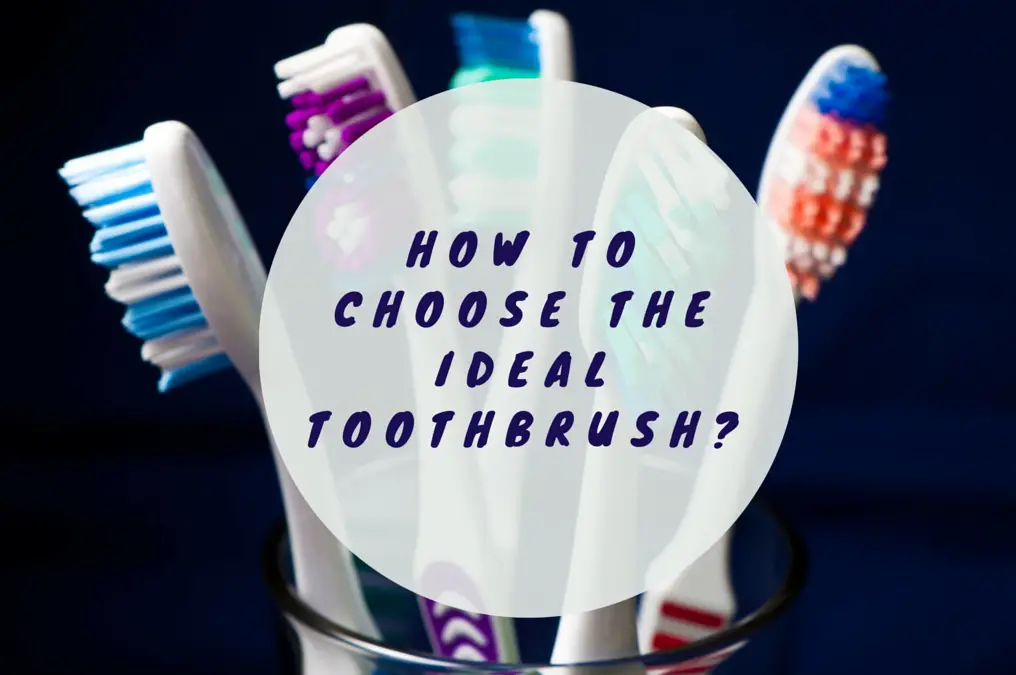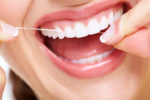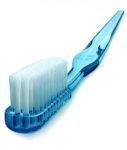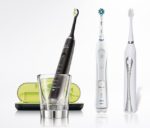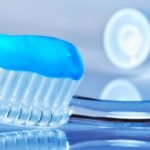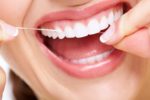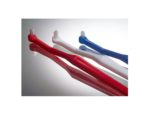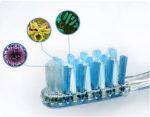Table of Contents
Brushing your teeth with a toothbrush is the basic and indispensable technique for plaque control, along with using dental floss or even better water flosser. On the market there are various shapes and structures of toothbrushes available, and manufacturers assure us regularly that only their toothbrush is the one we should have. So which one of them is really the best?
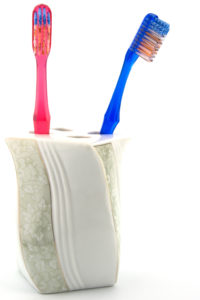
The answer is surprisingly simple: the one with which we can thoroughly clean as many tooth surfaces as possible!
This means that the efficiency of the toothbrush is important. It must be able to access all teeth surfaces and thoroughly brushed them from all sides. Therefore, the toothbrush must be of appropriate size (too big toothbrush cannot reach all the back teeth) and such form that it does not limit the usability. Brushes with a large and bulky heads of unusual shapes are not good because they have a reduced “maneuverability”, which is crucial for effective cleaning.
Therefore, the quality of the toothbrush is not in the shape of it’s head, many different fiber directions or unusual design, but in the fact how effectively you can handle it. Everything else is a marketing trick that generally does not affect the effectiveness of brushing. Provided it is used correctly, manual toothbrush with a simple and unsightly design can be much more effective than toothbrushes with many different types of fibers, rubber bands, which also can have a variety of unusual shapes of the head.
Moreover, a large number of such elements and unusual design of the toothbrush can often interfere with and complicate effective brushing.
Right brushing technique?
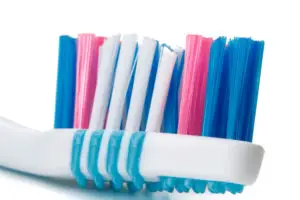 There are a number of different recommendations on brushing techniques and the “rules” that must be followed in order to brush your teeth effectively. Some of these recommendations determine the order in which you should brush your individual tooth surfaces, and some determine the time required for effective brushing – known rule about three minutes. In fact it makes no difference in which order we brush the individual surfaces of teeth – it is essential that all of them (namely, all available) are as thoroughly brushed. Also, the rule that “prescribes” the optimal brushing time of three minutes does not contribute significantly the quality of oral hygiene – one to two minutes of regular brushing can be far more effective than three minutes of improper “scrubbing” that may even be harmful.
There are a number of different recommendations on brushing techniques and the “rules” that must be followed in order to brush your teeth effectively. Some of these recommendations determine the order in which you should brush your individual tooth surfaces, and some determine the time required for effective brushing – known rule about three minutes. In fact it makes no difference in which order we brush the individual surfaces of teeth – it is essential that all of them (namely, all available) are as thoroughly brushed. Also, the rule that “prescribes” the optimal brushing time of three minutes does not contribute significantly the quality of oral hygiene – one to two minutes of regular brushing can be far more effective than three minutes of improper “scrubbing” that may even be harmful.
Duration of brushing therefore does not have a fixed value, but it just depends on the time required to well brush all the surfaces of the teeth. The prescribed three minutes are only a guide, this is the approximate time needed to thoroughly cleanse all surfaces of the teeth.
The complementary product with any toothbrushes are the toothbrush sanitizers.
What about the toothbrush position on my teeth?
Proper brushing should enable thorough plaque removal, and in doing so must not injure the gums. It is especially important to thoroughly brush the tooth neck, and for the fibers of toothbrush to partially reach between the spaces of the teeth (i.e. the interdental spaces).
To achieve this, the toothbrush fibers are set at an angle of 45 degrees to the outer surface of the tooth and by using gently vibrating or moving in a circular motion movements over the entire surface. In the same way are brushed inner (lingual and palatal) surfaces of teeth. To effectively remove plaque, it is important to brush systematically. For example: starting from the outer surface of the last molar in the lower jaw on the left. Then brush all external surfaces of the teeth of the lower jaw so that the brush moves to the adjacent teeth, until the last molar on the right side. That way we clean the outer surfaces of all teeth in the lower jaw. The same principle applies to the interior (lingual) surfaces, and then the chewing surfaces. Thus far, we have cleaned all the teeth of the lower jaw. There remains the upper jaw where teeth are brushed in the same way. It is understandable that brushing can start with any surface and with any jaw.
The order in which individual brush surface is completely irrelevant, it is important only to stick to systematic brushing and do not skip a single surface or even the entire tooth. This is actually the most common mistake when brushing – people tend to brush their teeth randomly and without any order. They skip from tooth to tooth, unevenly and insufficiently brush individual surfaces, and some even skip some teeth. In essence, with this random brushing you will constantly skip the same teeth – right-handers tend to leave out the right back teeth, a left-handed left (because both are unconsciously preferring brushing the opposite side). Thus, plaque accumulates in these “omitted” teeth in a sufficient amount to cause tooth decay or periodontal disease.
Brushing frequency is also a subject of various recommendations. Some authors recommend brushing three times a day, some emphasize the importance of brushing after every meal, and some consider enough brushing twice a day (morning and evening) to be the optimal way to control the plaque.
How often should I brush my teeth?
Although brushing after every meal is desirable because it removes food residue, it is not necessary to effectively control dental plaque. Plaque is indeed formed very soon after brushing, but for it to mature and become a nuisance takes several days. Therefore, brushing twice a day (morning and evening) is sufficient for plaque control, provided that it is done with sufficient thoroughness. Of course, in that basic and minimal routine for brushing, you can, on occasion, insert additional brushing after meals.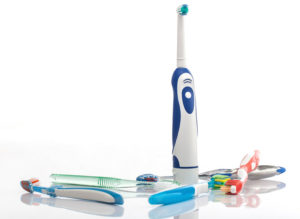
Besides manual toothbrushes, there are electric toothbrushes on the market. These toothbrushes use different mechanisms in order to ensure thorough removal of plaque. The most basic ones have rotating or vibrating head motions which complement the classic action of brushing. Studies have shown that these brushes do not show better results than manual toothbrushes, provided that the manual toothbrush is properly used. More complex, more advanced, and more expensive electric toothbrushes are sound and ultrasonic vibrating, with very high frequencies, and these vibrations are transferred to the water and assist in breaking up the structure of the plaque. These toothbrushes removed plaque somewhat better than manual ones, but the difference is so small that it is negligible in daily oral hygiene. One other good choice for plaque removal is bamboo toothbrush because of its antibacterial properties. Best manual toothbrush with the careful and patient handling, can be as effective in remove plaque as an electric toothbrush. On the other hand, the advanced technology of various electric toothbrushes cannot compensate for incorrect or superficial tooth brushing – the efficiency of the toothbrush is not in its construction or technology but the technique of brushing.
If you are trying to teach your kids to brush their teeth for the first time some of the kids toothbrushing songs could help.
Additional Types of Toothbrushes:
- End Tuft Brushes
- Chewing Toothbrushes
